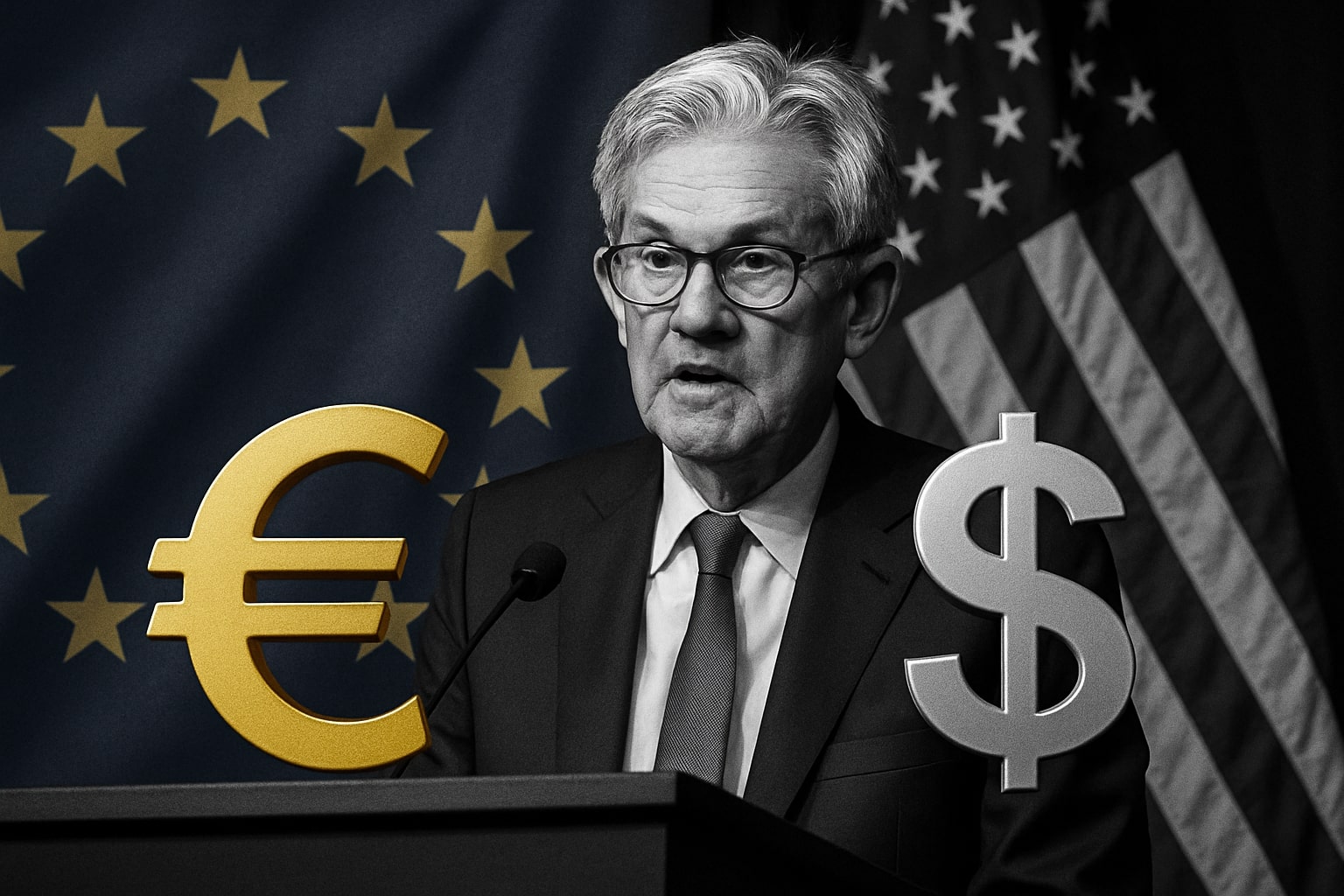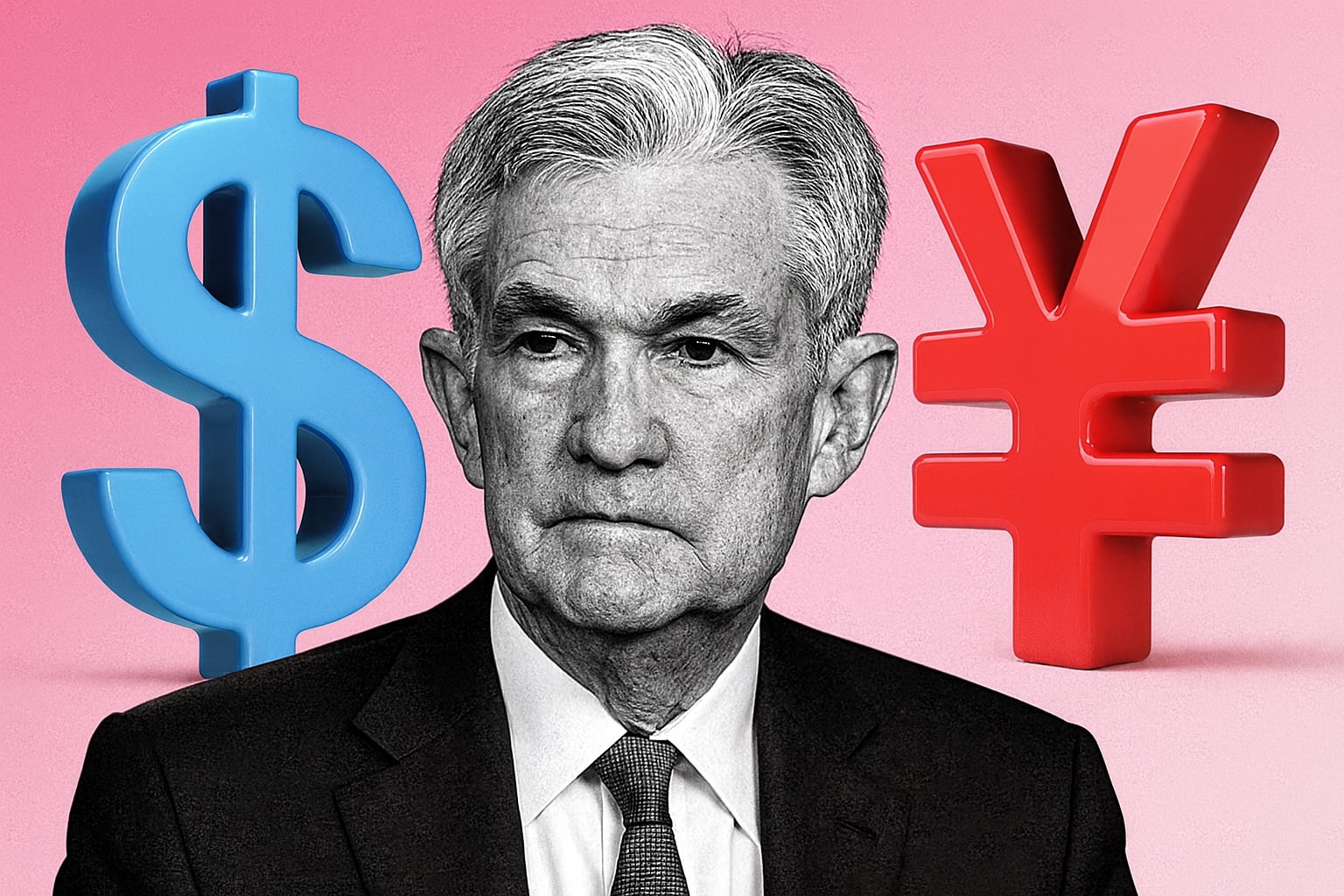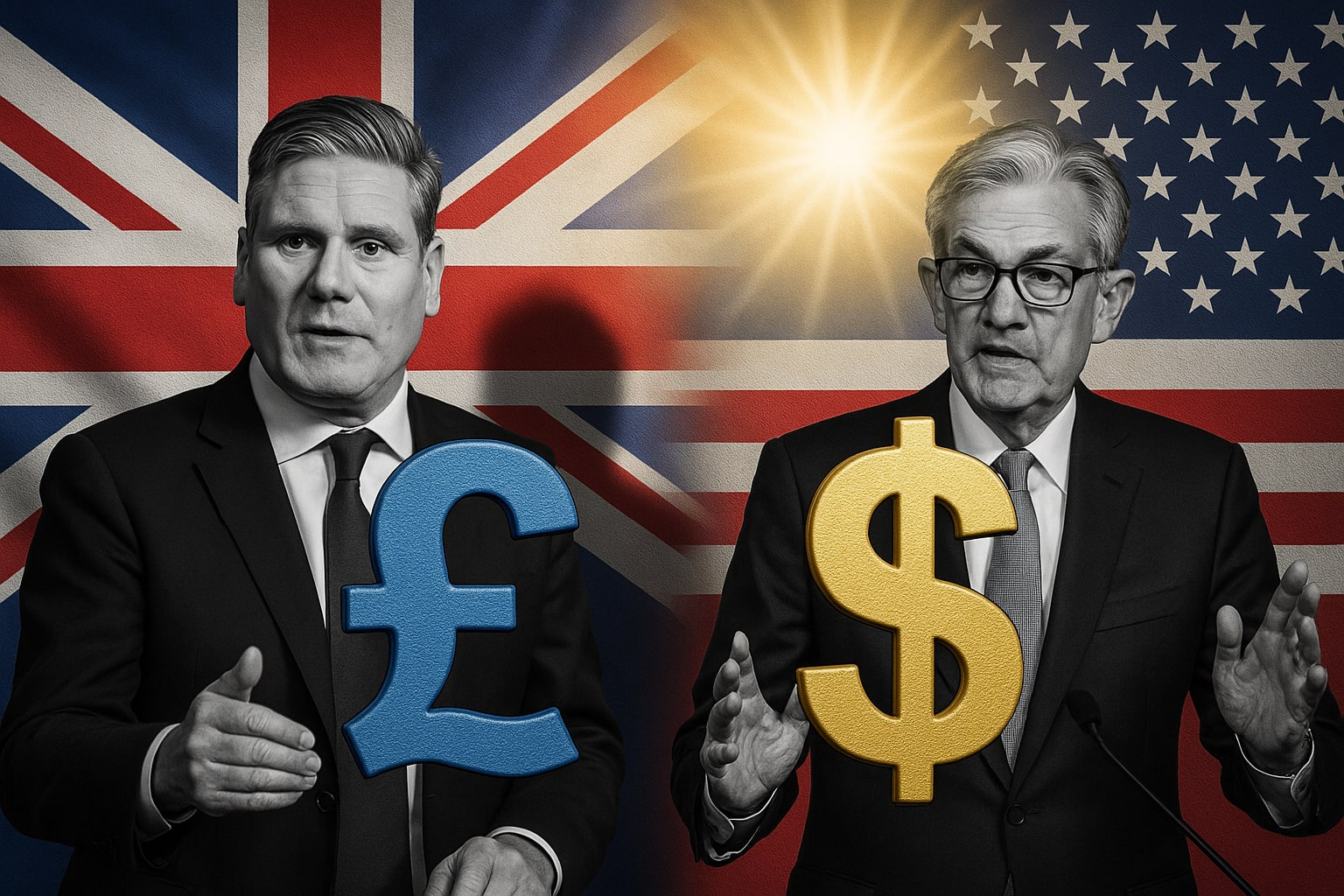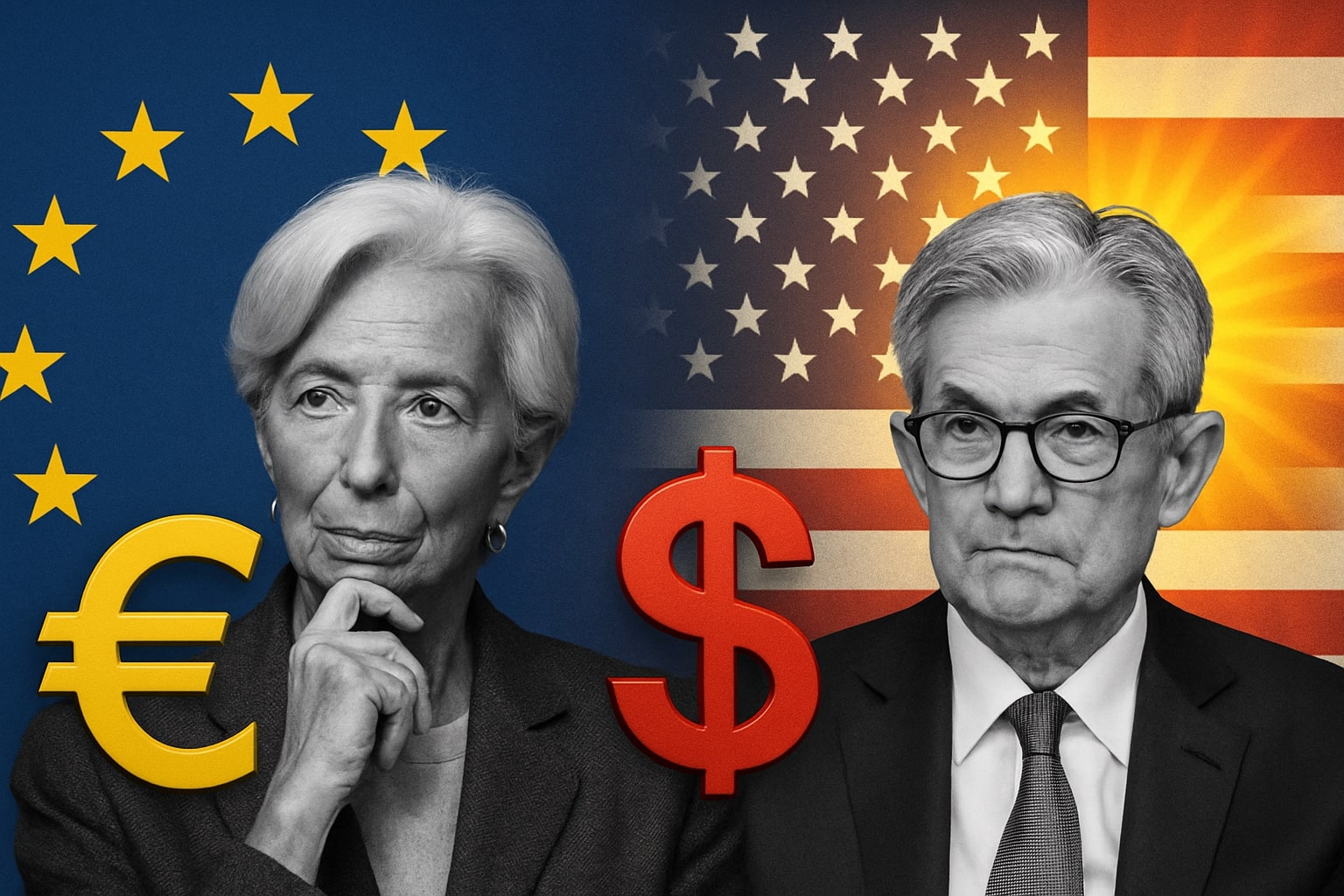
EUR/USD Price Forecast: Euro Slips to 1.1550, Weak Eurozone Data Tighten Pressure
EUR/USD stays under pressure near 1.1550 as Fed policy caution, a firmer dollar, and cooling Eurozone inflation signal deeper downside toward 1.1500–1.1450, unless the pair breaks above 1.1620 resistance | That's TradingNEWS
EUR/USD Extends Slide Toward 1.1550 as Dollar Strength and Eurozone Weakness Collide
The EUR/USD pair is trapped under heavy pressure, trading near 1.1550, its weakest level in almost three months, as investors reposition around diverging monetary policies between the Federal Reserve and the European Central Bank (ECB). The euro’s decline has deepened despite a softer U.S. inflation backdrop, with the pair losing over 2.8% month-to-date, weighed by weak Eurozone data, a firmer U.S. dollar, and falling rate-cut expectations. The U.S. Dollar Index (DXY) holds near 99.70, close to a three-month high, as traders digest the Fed’s latest move—a 25-basis-point cut to 3.75%–4.00%—and Chair Jerome Powell’s message that further easing is “far from a foregone conclusion.” This language re-anchored expectations, sending Treasury yields higher and driving renewed demand for the greenback, while the euro was left without policy support from the ECB.
Dollar’s Momentum Builds After Fed Cut and Hawkish Signals
Although the Fed lowered rates for the second time this year, Powell’s post-meeting tone surprised markets. The vote itself showed division: one policymaker, Governor Stephen Miran, favored a 50-basis-point cut, while Kansas City Fed President Jeffrey Schmid voted against any change, citing inflation still above target. Powell’s remarks pushed the 10-year U.S. yield back above 4.10%, up nearly 30 basis points from last week’s low. Traders trimmed December rate-cut odds from 91% to 64%, limiting downside in the dollar. The CME FedWatch Tool now implies a single cut left for 2025. Against this backdrop, the euro remains fragile. The EUR/USD has fallen nearly 4% since late August, its longest losing streak since mid-2022, and every rebound attempt above 1.1620 has been quickly sold off.
Eurozone Data Confirms Stagnation Across the Bloc
The latest Eurozone economic readings paint a discouraging picture. Germany’s retail sales rose just 0.2% in October, missing estimates for 0.4%, while French inflation edged up a modest 0.1%, and Italy recorded a –0.3% decline. The Eurozone’s flash Harmonized Index of Consumer Prices (HICP) printed at 2.1% year-on-year, with core inflation steady at 2.4%, both perfectly aligned with forecasts yet signaling fading price pressure. For the European Central Bank, this combination of soft growth and cooling inflation means that rate hikes are off the table, but rate cuts are not imminent either. The ECB’s Deposit Facility rate remains at 2.00%, unchanged since July. President Christine Lagarde offered little forward guidance, acknowledging that growth “remains subdued” but warning that the Governing Council needs more data before committing to easing. Markets now expect the first ECB rate cut no earlier than Q2 2026, leaving the euro vulnerable against yield-rich currencies.
Policy Divergence Intensifies Between the Fed and the ECB
This widening policy gap has become the defining theme for EUR/USD. While the Fed still projects rates near 4% through mid-2026, the ECB’s cautious stance leaves investors with little reason to hold euros. The U.S. economy continues to expand above potential, supported by resilient consumption and a job market still producing 150,000–180,000 monthly gains, while the Eurozone remains near recessionary levels. The Eurozone composite PMI has hovered around 48.5, signaling contraction for the fifth straight month. The contrast in fundamentals drives structural demand for dollars, particularly among global investors seeking higher yields and liquidity safety. This macro divergence explains why EUR/USD has been unable to regain ground even when risk sentiment improves.
Trade Truce Between the U.S. and China Lifts the Dollar, Not the Euro
The announcement of a U.S.–China trade truce, which saw tariffs reduced from 57% to 47%, initially boosted global risk appetite but ended up favoring the dollar instead of the euro. The deal, signed after meetings between President Donald Trump and President Xi Jinping, included commitments on agricultural purchases, rare-earth exports, and fentanyl control. Markets briefly interpreted the agreement as a sign of stability, but the improvement in global trade outlook is seen as disproportionately benefiting the U.S. economy. The Eurozone trade surplus, once its key strength, has eroded due to elevated energy import costs and weak demand for manufactured exports. Consequently, while equity markets rallied, the euro remained underperforming, with traders continuing to sell rallies near 1.1600.
Read More
-
SCHD ETF Price at $27: Can SCHD’s 4% Yield and 9.15% Dividend Growth Beat High-Yield Covered Call ETFs?
15.12.2025 · TradingNEWS ArchiveStocks
-
XRP ETFs Close on $1B Inflows as XRPI at $10.92 and XRPR at $15.52 Hit 52-Week Lows
15.12.2025 · TradingNEWS ArchiveCrypto
-
Natural Gas Price Forecast: NG=F Holds the $4 Floor as Oversupply Clashes with 2026 LNG Demand
15.12.2025 · TradingNEWS ArchiveCommodities
-
USD/JPY Price Forecast - Dollar to Yen At 155: Yen Strength Builds As BoJ Hike And NFP Collide
15.12.2025 · TradingNEWS ArchiveForex
Technical Picture: Momentum Points to Further Weakness
Technically, EUR/USD continues to follow its descending trendline from the September high of 1.1830, confirming persistent bearish control. The pair trades below the 20-day EMA at 1.1630, the 50-day EMA at 1.1618, and the 200-day EMA at 1.1653, with all averages sloping downward. The Relative Strength Index (RSI) hovers near 37, showing mild oversold conditions but not yet signaling a reversal. Price action around 1.1545 remains critical; a daily close below this level opens the door toward 1.1510 and 1.1477, with a deeper move potentially testing 1.1390, the August low. On the upside, bulls must reclaim 1.1620 to challenge 1.1669 and 1.1728, but given the macro backdrop, upside moves are likely corrective rather than structural. The CFTC’s Commitment of Traders report shows speculative short positions in the euro increasing by 11% week-over-week, reflecting conviction behind the downtrend.
Market Psychology and Institutional Positioning
Investor sentiment toward the euro has deteriorated steadily as funds rotate back into the dollar. Institutional surveys show portfolio managers cutting euro exposure for the fourth consecutive week, with positioning now at its lowest since June. Meanwhile, dollar demand has been reinforced by strong U.S. corporate earnings and steady capital inflows. Risk sentiment remains moderately positive following the trade truce, but the dollar’s defensive appeal dominates. EUR/USD volatility, measured by the three-month implied vol index, stands at 6.3%, its highest since August, underscoring that traders are preparing for large directional moves as the market consolidates near multi-month lows.
Euro Technical Indicators Signal Potential Rebound but Limited Momentum
Short-term charts show early signs of stabilization, but the structure remains fragile. On the 4-hour timeframe, a cluster of small-bodied Doji candles near 1.1550 hints at indecision following a strong down leg. A minor rebound toward 1.1590 or 1.1620 is plausible before renewed selling pressure resumes. The pair’s bearish engulfing candle earlier in the week confirmed sellers’ dominance, and each intraday rally above 1.1600 has been quickly faded. Market depth data from EBS and Refinitiv show increased dollar buying interest near 1.1540, suggesting that liquidity providers anticipate further euro weakness in early November.
Eurozone Inflation Expectations and Energy Risks Shape the Outlook
The inflation picture remains pivotal. While headline CPI has cooled to 2.1%, the ECB’s models indicate underlying pressures in services remain sticky. Meanwhile, Europe’s energy risk has re-emerged as winter approaches. Natural gas prices, although well below 2022 peaks, have rebounded 12% month-to-date amid supply disruptions in Norway. Any renewed spike could pressure industrial output further, reinforcing the ECB’s hesitation to ease. Fiscal fragmentation across member states complicates the policy response, leaving monetary tools as the sole anchor for stability. This macro uncertainty continues to weigh on investor confidence and by extension on EUR/USD, which has become a proxy for global risk and Eurozone policy stagnation.
Trading News Analysis and Directional Bias
Restructuring all data across monetary policy, inflation, and market behavior points to one dominant reality: the euro remains fundamentally weak, while the dollar retains macro dominance. The Fed’s higher-for-longer stance and stronger labor market data keep U.S. assets attractive, while the ECB’s cautious, almost inert approach signals stagnation. With the EUR/USD pair trading near 1.1550, sellers remain in firm control, and downside targets at 1.1500 and 1.1450 appear increasingly likely unless the euro can break decisively above 1.1620. Traders are positioning for continuation into early November, with stops set just above 1.1640 to protect short positions.
Verdict: EUR/USD Remains Bearish, Targeting 1.1450 in November
Considering the divergence in economic performance, rate expectations, and market positioning, the EUR/USD outlook stays bearish. The pair is unlikely to recover sustainably until U.S. inflation data softens or the ECB signals readiness to ease policy. The immediate path of least resistance remains downward, with 1.1500 as the next critical test and potential extension to 1.1450 if U.S. yields stay firm above 4.10%. Technical signals confirm continuation, not reversal, and the euro remains a sell on rallies until it reclaims 1.1660 on a daily close. Trading News maintains a Sell rating on EUR/USD, expecting persistent downside pressure as macro divergence continues to define the market’s tone heading into November.



















